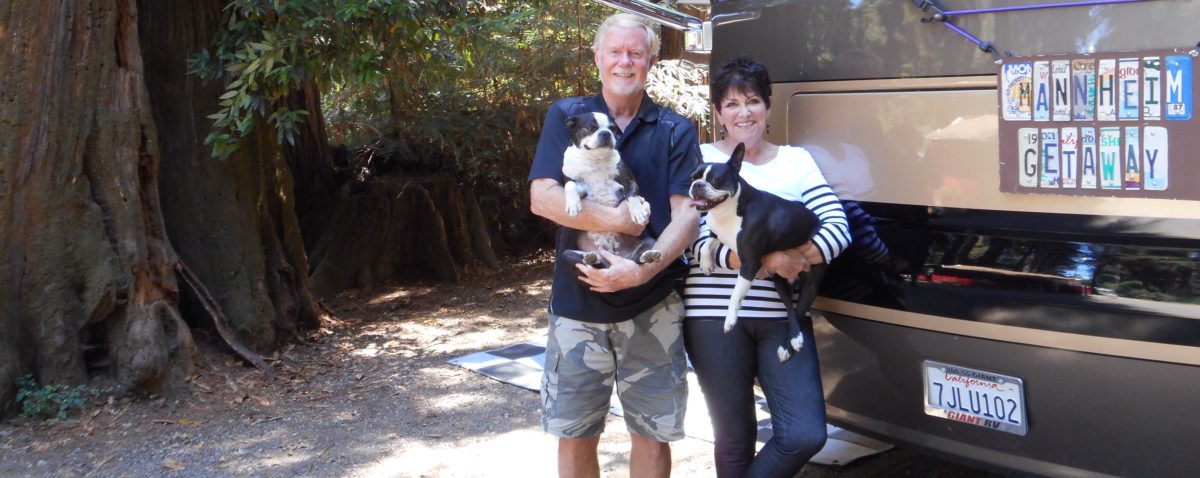California has been subject to very intense Pacific storms since Christmastime, in some cases seeing a normal year’s worth of rain dropping in a few days.

One of the hardest hit areas has been the Santa Cruz coastal area in central California. I saw some news footage today which showed the San Lorenzo River above flood stage, something that hasn’t happened in about sixty years.

I lived right next to that river in 1960-61 and it was so tame that the only place one could swim on it was a “swimming hole” formed by a small, natural dam. Maybe five years before that time, the San Lorenzo River overflowed it banks by 20 feet and flooded my friend Mike’s house, leaving mud stains on the interior stucco about five feet up the wall. They were too poor to fix the house, and so were stuck living in a very moldy house.
California is not typically targeted by these kinds of heavy storms but they occur every once in awhile due to changes in the Jet Stream and very moist air vapor being firehosed at the West Coast. It is called an atmospheric river or a Pineapple Express. It is said that the amount of moisture conveyed from the Hawaiian Island area to the West Coast in one event is equivalent to the entire flow of the Amazon River, the largest river on earth.

That’s a heck of a lot of water falling in a short time, and one would think that California’s mega drought would be a thing of the past after the past several weeks’ onslaughts. However, that is not the case, as most of that rain will end up in the Pacific Ocean from whence it came. The problem is two-fold: (1) too much rain, too fast, not giving the ground the opportunity to absorb the water; and, (2) Pineapple Expresses are relatively warm storms which don’t result in as much Sierra Nevada snowfall except in the mountains above 7,000 ft.

California has a very sophisticated plumbing system which consists of dams, reservoirs and aqueducts to save Winter rainfall for use later in the year. The system is heavily reliant on mountain snowfall to feed slowly recharge the reservoirs in the Spring and early Summer.

One of the benefits of living in California is that just about any resident is within an hour or two’s drive of a world-class ski resort. The same thing goes for outstanding surf locations along the coast. The past week’s monster storms have produced the highest waves in many years. Unfortunately, a lot of damage has been done to shorelines, piers, and adjacent roadways from the huge breakers.



Unfortunately, nature’s bounty from an atmospheric river event overwhelms the system, produces proportionally less snow, and doesn’t sink into the soil to recharge the aquifers. These freak storms will help ease the drought problem a bit, but unless there is significant rainfall in January, February and March, California will still be thirsty.
We now live in the Mohave Desert, in Mesquite, Nevada, in the “rain shadow” of the California’s Sierra Nevada Mountains. That range, which tops out at 14,000 feet in elevation, pretty much wrings most of the moisture out of any storms moving easterly across California.

These latest atmospheric river events have only resulted in maybe an inch or so of rain here in Mesquite, where the average annual total is 7 inches. We haven’t seen anywhere near that amount in the past four years, and I believe the annual total was nearer to 2 inches in the past three years.
It’s the desert, for God’s sake, and we’re in the middle of a two-decade-long drought.
Still, I’d rather live here than in many other areas of the United States. We don’t get the extremely cold temperatures that residents see in Montana, Wyoming, North Dakota and Minnesota. We don’t have the oppressive humidity that exists below the Mason-Dixon line, nor do we see tornadoes (like the Midwest) and hurricanes (like the Deep South) except on TV. Those poor folk experience weather-related natural disasters every year.


Like most of the Southwest, we experience hot, dry weather in the Summer along with desert breezes, and it would be almost impossible to live out here in July and August without air conditioning. But, for nine months out of the year, the weather is wonderful.
Me and my buddies hike in the nearby mountains about once per week. The region has been parched for the past couple of years and we observe very few animals on our hikes. We traverse some rugged terrain, including very deep washes and barrancas, and I haven’t seen running water in those gravelly streambeds in several years. Even the Virgin River, which drains southwest Utah and the Arizona Strip, has been reduced to a trickle in the Mesquite area, although I did observe a little volume yesterday.


Most of the rain that this region gets comes in the form of Summer monsoonal flows coming up from the south out of the humid Gulf of California (Mexico). It is possible for one of these events to drop a couple of inches of rain in an hour or two, causing flash flooding (“gully washers”) that can quickly create big gashes in the sandy, desert landscape, destroy roads and bridges, and create short-term inconvenience. These are our ‘extreme weather events”; however, they happen infrequently and don’t do much damage to the populace.

What is happening in California right now is the equivalent of a mega gully washer that wreaks havoc, overwhelms the storm drain and modest river system, and teases Californians with jillions of gallons of precious rainfall racing past their homes and farms back into the ocean before it can be put to productive use.
Come January, Southern California water districts will be praying for rain, like always.
